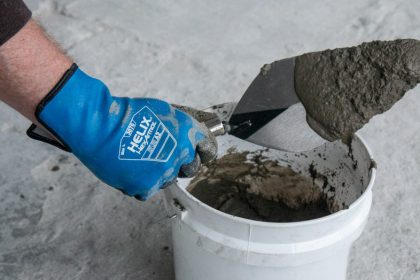Australia could cut its climate pollution by 75 per cent just by doubling down on already available tools, experts say.
New research suggests that greater investment in solar and other already available technologies could slash emissions by more than three-quarters by the end of the decade.
The findings come as the nation emerges from its hottest 12 months in history, with cities across the country felt the heat as the mercury reached record levels.
The mean temperature across the nation was nearly 2C higher than the 30-year average, and meteorologists blamed a combination of climate change and rare weather patterns for the increase.
But despite the weather warnings, a report released last week by The Climate Council declared Australia has a clear pathway to reducing climate change simply by utilising already available and proven technologies.
The Seize the Decade report uses modelling analysis focused on how we produce electricity, manufacture goods, move around, use land, and build to demonstrate how improvements to each would slash carbon emissions.

The Climate Council’s recommendations, backed by researchers from The University of Melbourne, Griffith University, Monash, and The University of Technology Sydney, centre around a faster transition to clean energy and a greater uptake of energy-efficient and zero-emission methods across the five key sectors.
How Australia can slash 75 per cent of emissions by 2030:

The fast-tracked proposal would involve heavy investment into solar, wind and renewable energy battery storage, transitioning a third of all road vehicles to electric cars, electrifying new and existing homes, and adjusting industrial processes to avoid fossil fuels, as just some of the critical changes needed to meet the target.
- Supercharging renewables to reach 94% renewable energy in our grid by 2030.
- Solar panels are being put on the rooftops of two or three Australian homes.
- Swapping polluting vehicles for electric cars and incentivising against air travel.
- Making new buildings all-electric and electrifying existing homes.
- Greener alternatives should be used in industrial processes to cut fossil fuel use.
However, implementing such rapid measures wouldn’t be without its challenges, with the proposals requiring billions of dollars in additional government investments and further carbon tariffs or laws to encourage or force people to choose greener but less convenient transport, energy and manufacturing methods.
Amanda McKenzie, Climate Council CEO, says the wild weather across the summer served as a warning for the nation to start taking climate action more seriously.
“Australian communities are being hurled from flooding rains to scorching heatwaves, deadly fires, and back again. We understand more clearly than ever that life as we know it is under threat, and we must slash climate pollution this decade,” she said.
“There is no safe level of climate pollution, and everything we do to reduce it matters. We can seize the decade and drive down climate pollution by electrifying our nation and building a modern industrial base that underpins our prosperity for future generations.”
She says focusing on proven technologies would be a fail-proof way to fast-track Australia’s net zero emission goals.
“Solutions that work across every part of our economy are proven, available, underway and ready to be scaled up. There can be no excuses for failing to protect our children’s future.”
Renewables now make up 40 per cent of Australia’s electricity needs, with more road users driving electric vehicles than ever before and 1 in 3 Aussie homes connected to rooftop solar.

Energy expert and climate councillor Tim Nelson says that while Australia has come a long way in reaching its renewable energy goals, now is the time to double down on efforts.
“Seizing the decade means giving more power to the people, slashing climate pollution three times faster than we are now and retiring all coal-fired power stations. To do this, we need a bigger grid that’s 94% powered by renewables, and we need to more than double the number of rooftops turning sunshine into energy,” he declared.
“Australia’s shift to a clean economy is underway, but we need to keep moving or risk getting left behind. The ‘Seize the Decade’ report shows how Australia can capitalise on its world-beating renewable resources and industry know-how to supercharge its momentum, make more things here, and set its economy up for long-term success.”





